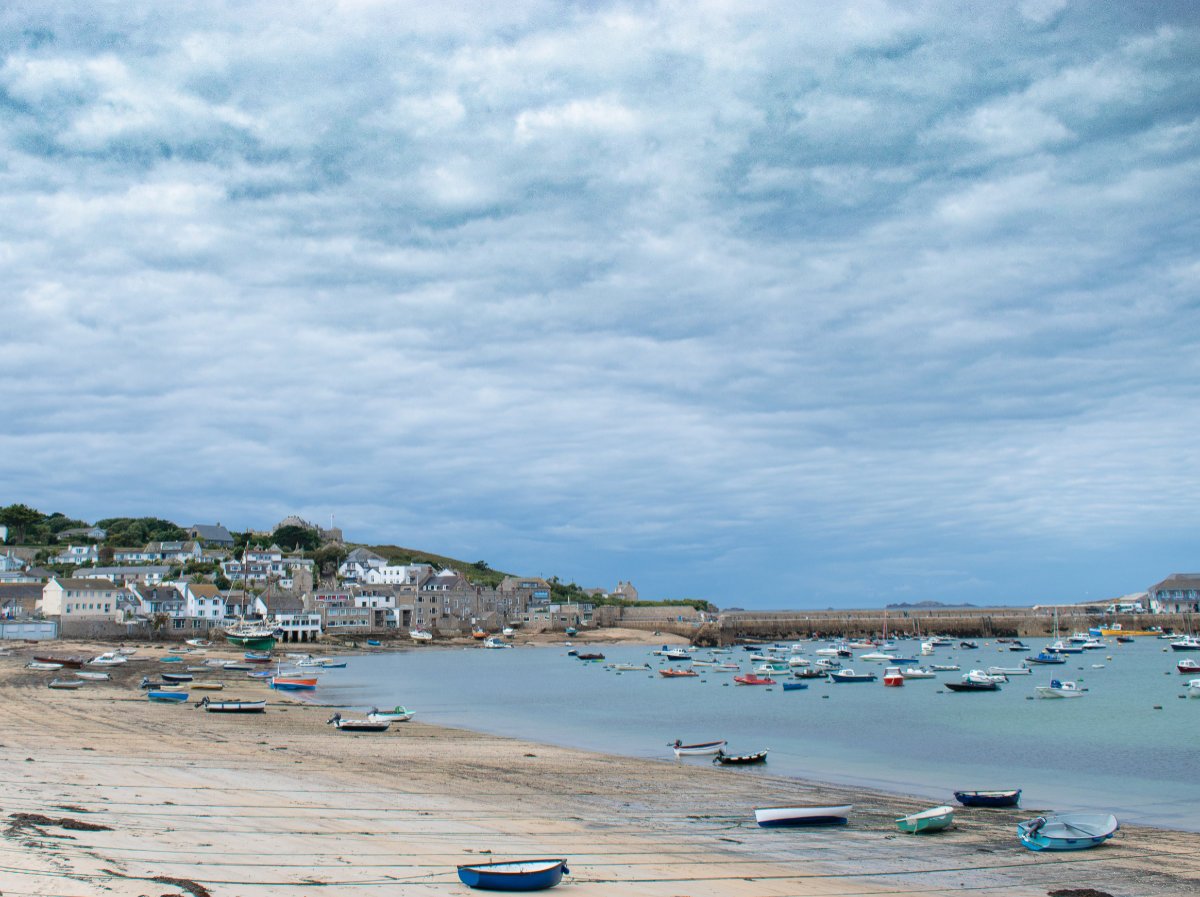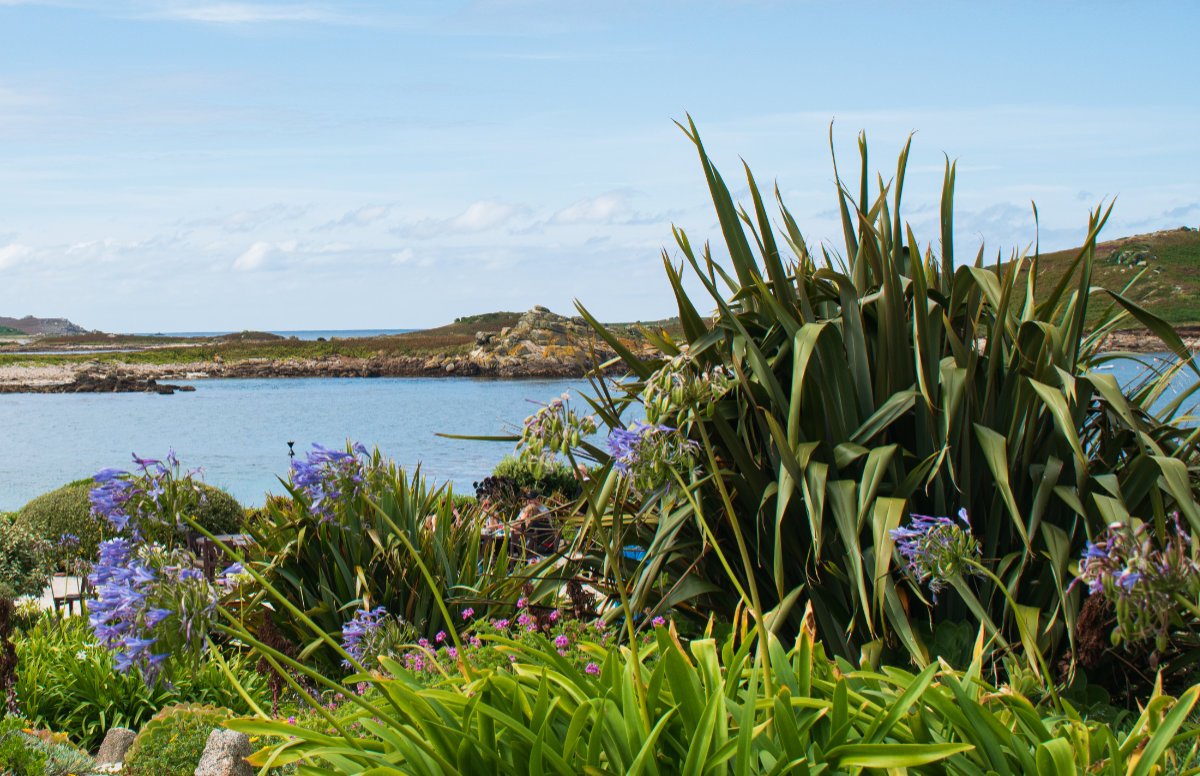
The shallow waters around the Isles of Scilly are peppered with the hulls of the boats that have met their demise on shallow rock reefs. With sea levels rising, the settlements on the islands are at risk of joining the sunken ships. What does climate change mean for the Isles of Scilly?
It isn’t hard to see that the Scilly Isles are different. A subtropical archipelago in the English Channel, the Scillies are blessed with a unique ecosystem. Bathed by the warm waters of the Gulf Stream yet often battered by fierce storms that charge across the width of the Atlantic, the islands feature many unique juxtapositions. Where else in the UK can you find puffins nesting alongside hundreds of wild grey seals, fist-sized, rose-shaped succulents and quartz-filled, sparkling sand that wouldn’t look out of place in the window display of a high-street travel agent?
Small, low-lying and with such a unique ecosystem, the Isles of Scilly are also dangerously at risk of climate change and rising sea levels.
The Intergovernmental Panel on Climate Change (IPCC) says that two of the key risks from climate change in Europe are increased coastal flooding and erosion from storms and sea level rise. St Mary’s, the largest island on the Scillies, is less than two miles in diameter, meaning that the consequences of coastal erosion and flooding are potentially catastrophic for the islanders. Hugh Town, home to more than three-quarters of Scillonians, sits at just over three metres above sea level. With sea levels predicted to rise by 52cms by 2100, and offshore waves by 1m by 2080, Hugh Town is at dangerous risk of increased flash flooding, or even of being submerged in the near future.
Rising sea levels are nothing new in the Scillies and have been pivotal in shaping the islands as we know them today. Nine thousand years ago, the Scillies were just one island (today there are 145, of which just five are inhabited). Sixty-six per cent of this land-mass disappeared underwater between 2500 BC and 2000 BC, but global warming means that the remaining landmass is now under threat.
In fact, it’s thought (although this has never been proven) that the Scillies were once attached to the mainland. The granite that forms the Scillies is part of an enormous batholith that spreads all the way down from Dartmoor. The ancient, mythical land of Lyonnesse was said to have been completely swallowed by an enormous flood, taking homes, churches and farmland with it. Whether Lyonnesse ever really existed is doubtful, but that the Scillies have always been, and continue to be, moulded by rising sea levels is indisputable.
The highest point on the Isles of Scilly, Telegraph Hill on St Mary’s, stands at just 51 metres above sea level – roughly the height of an average man standing on top of the Arc de Triomphe. It’s less than a quarter of the height of Brown Willy, the highest point in mainland Cornwall. If unchecked climate change causes sea levels to rise as scientists predict, the whole archipelago could disappear.
Short term, there are certain positives to climate change in the Scillies. With tourism as their main industry, rising temperatures could push British tourists to holiday closer to home, shunning destinations further south that are becoming too hot for comfort. It could also prove beneficial for agriculture.

As Ben Julian at Scilly Flowers, a family run flower farm on St Martin’s, told me:
“It isn’t that we aren’t concerned about climate change and it is very much on our radar. But in the short term, warmer weather could make our lives easier. We’re fortunate on St Martin’s that we don’t really flood. The topography means that most homes and farms are right at the top of the island. We specialise in scented narcissi, which have different growing conditions to regular daffodils. They originate from Mediterranean climates, so warmer weather is actually beneficial. We might well find that the time of year when the scented narcissi flower changes over the coming years.
“I have noticed that coastal erosion seems to be accelerating though,” he adds. “The cliff paths and cliffs have shown more damage in recent years.”
Kylie Carter and Dave Mumford are the third generation to farm at Salakee Farm on St Mary’s. During their tenure, the way they’ve approached farming has changed dramatically.
“Hotter summers in Scilly mean that the dry period during the summer lasts longer, and we’ve had to think about storing water to ensure that we have enough for this time,” says Kylie.
A growing awareness of climate change has meant that they now farm regeneratively, consciously aiming to make a positive impact on an already fragile ecosystem.
One of the main problems facing the Scilly Isles is the lack of data. Records on high water and surge data only started to be compiled in 1994, more than 80 years after data from mainland Cornwall. The Scillies are fighting an invisible enemy that they don’t have the necessary resources to fully understand.
Only time will tell exactly how the Scillies will be impacted by rising temperatures and sea levels. In the short term, the positives of climate change may outweigh the negatives, but looking further forward, will the Scillies meet the same fate as mythical Lyonnesse?





